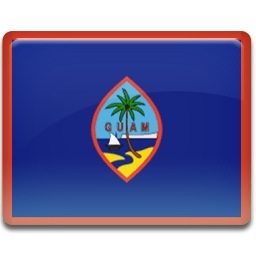by Monique Storie, University of Guam
 Question: When is it okay to use a native language in a children’s book?
Question: When is it okay to use a native language in a children’s book?
This question has been sitting at the back of my mind for some time now. For about fifteen years, I have been working with a group who are passionate about preserving and promoting the indigenous cultures within the Micronesian region. I have participated in events, activities and projects to keep the Chamorro culture alive and the Chamorro language has been a crucial part of these efforts. The Chamorro language is an essential part of the Marianas archipelago’s cultural identity because language is one of the last distinctly Chamorro elements left. Because of that, I am moved by the sound of our elders singing and am filled with hope when I hear young children talking with each other or with their parents in Chamorro. I support publishing books, songs, and news articles in Chamorro. But despite all my pride and elation, despite all my advocacy and academic understanding, I find myself conflicted about using Chamorro for children’s books.
I know that having Chamorro in print demonstrates it is alive and a part of normal everyday life, elevating the status of the language so that it enforces identity and encourages social change. Language played a pivotal role in creating Spanish citizenry in the 1700s and in establishing an American allegiance during the early to mid1900s. As the number of native speakers declines and more research is done into the intricacies of the language, the Chamorro people are beginning to rediscover the connection between language and what they know about themselves and their world. So it makes sense that the native language is being used to revitalize the Chamorro identity now.
I also know that the use of the Chamorro language can help create that sense of authenticity that readers need to connect with a story. Finding words like chenchule or manginge’ tell Chamorro readers that the story is about them and helps them to buy into the story (Barrera & Quiroa, 2003). The presence and use of Chamorro in children’s books help to establish literacy at various levels. So why am I so conflicted?
My struggle is partly tied to the current state of the Chamorro language. Different orthographies exist which have led to debates over which is the “correct” way to spell a word or the right way to define it. Additionally, there are many Chamorros who struggle to understand the language. Some of these individuals (myself included) have felt “scolded” because Chamorro does not roll easily off their (our) tongues. For a while, in some of the most conservative circles, the ability to speak or read Chamorro had been seen as the most definitive evidence of your Chamorro “membership.” I worry that children’s literature could become a pawn in these debates.
My struggle is also tied up in the way the stories are written. Some stories, such as the Eric Carle-esque Kåo Siña Håo? by Dolores Marciano or the collective biography of ancient Chamorro leaders I manmaga’lahi yan I manma’gas: geran Chamorro yan Españot (1668-1695) by Ed Benevente, are notable because the story is told in Chamorro. What I mean is that the story takes center stage rather than the language being the important experience. In other stories, such as Si Isa yan Nåpu (Benavente, 2009), the language seems to be most important and the plot is secondary. In these cases, the reader learns how to use the Chamorro language rather than experiences the language in use. I worry that these latter books will become the norm for local publishing and the growth of a more robust children’s literature will stagnate.
I recognize that these concerns are “growing pains” related to a changing Chamorro identity and (I hope) to a maturing local literature. With all that said, I still have some reservations about advocating books written in Chamorro when I see they can become tools to divide a community, e.g. those who can read the language are more Chamorro than those who are not. I have a hard time advocating books written in Chamorro when I see that their intended purpose is to merely teach grammar and vocabulary.
In the end, I am saddled with the questions: when is it okay to use a native language in a children’s book? When is it okay to advocate against it?
What do you think?
References:
Barrera, R. B. and Quiroa, R. E. (2003). The use of Spanish in Latino children’s literature in English: What makes for cultural authenticity? In D. L. Fox and K. G. Short (Eds.). Stories matter: The complexity of cultural authenticity in children’s literature. Urbana, IL: National Council of Teacher’s of English.
Benavente, Eddie L.G. (2009). Si Isa yan Napu. Guam: Eddie L.G. Benavente.
Benavente, Eddie L.G. (2007). I manmaga’lahi yan I manma’gas: geran Chamorro yan Españot (1668-1695). Mangilao: Guam: Eddie L.G. Benavente.
Marciano, Dolores. Kåo Siña Håo? Illustrated by
Please visit wowlit.org to browse or search our growing database of books, to read one of our two on-line journals, or to learn more about our mission.
Journey through Worlds of Words during our open reading hours: Monday-Friday, 9 a.m. to 5 p.m. and Saturday, 9 a.m. to 1 p.m. To view our complete offerings of WOW Currents, please visit archival stream.
- Themes: Chamorro, Indigenous, Monique Storie, native language
- Descriptors: Debates & Trends, WOW Currents
